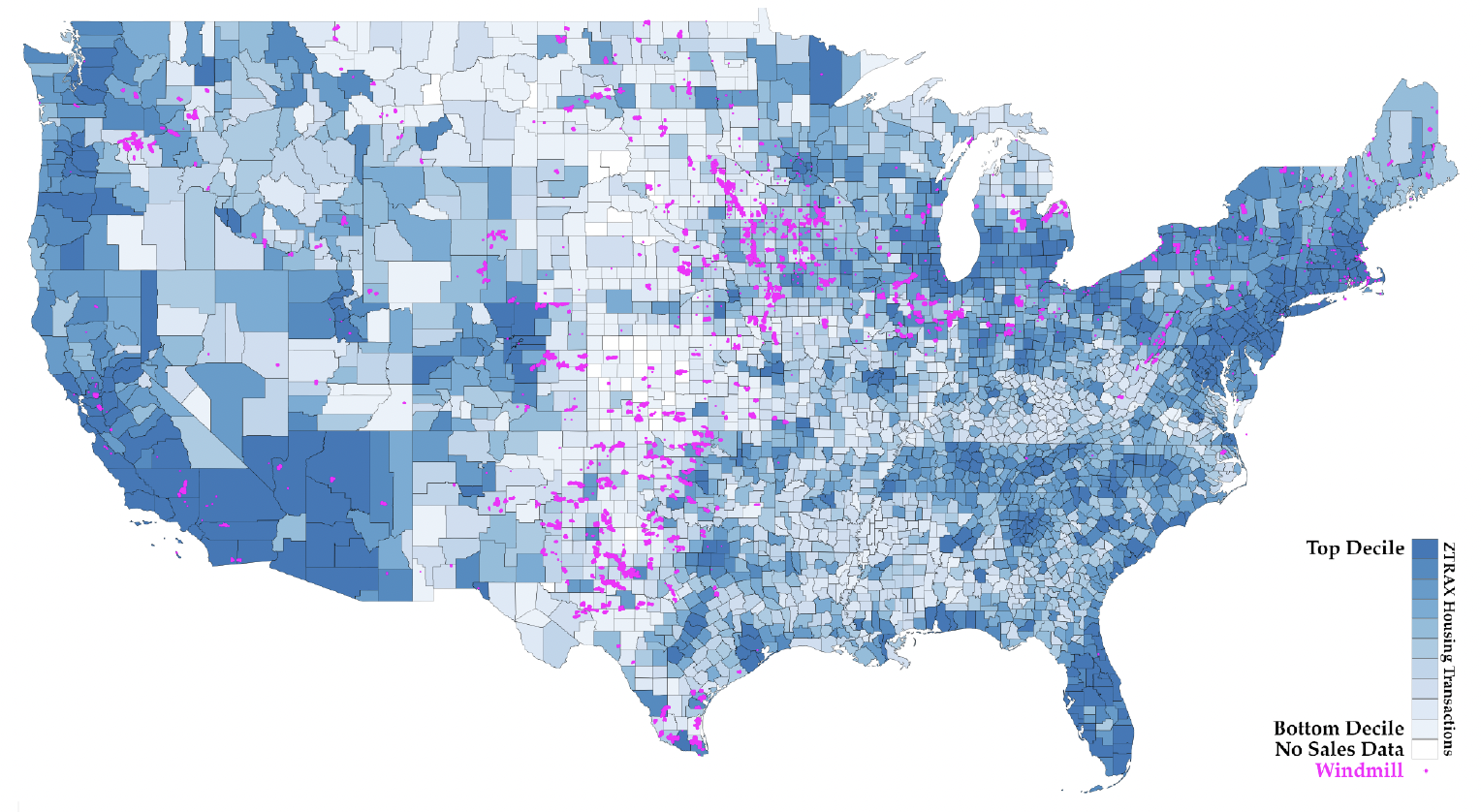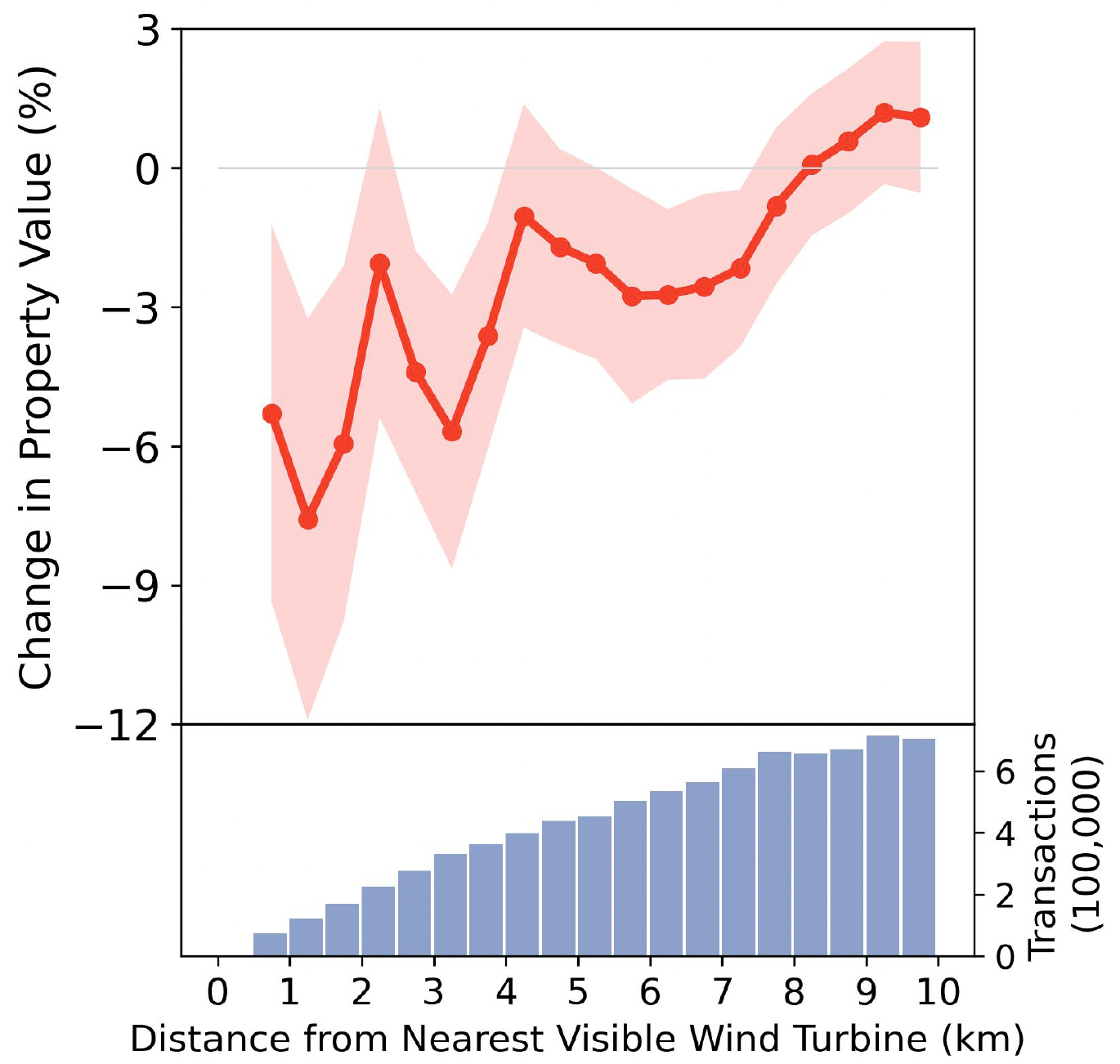Lecture 18
Valuing the Environment: Methods
October 18, 2024
Valuing the Envrionment: Methods
Revealed Preference Methods
Hedonic Methods Overview
- Hedonic Property Value Method
- Concept: Decomposes the price of a good into the implicit prices of its attributes.
- Application in Real Estate: Housing prices are influenced by structural characteristics and environmental factors.
- Hedonic Wage Method
- Purpose: Analyze how job characteristics, including environmental risks, affect wages.
- Risk Compensation: Higher wages are paid for jobs with greater risks to attract workers.
Hedonic Property Value Models
- Hedonic Property Value Models: Use market data, such as house prices, and break down the price into individual attributes of the house, neighborhood, and environment.
- House Characteristics: Includes factors like the number of bedrooms, lot size, and house features.
- Neighborhood Characteristics: Crime rates, school quality, etc.
- Environmental Characteristics: Air quality, nearby open space, distance to landfills, etc.
- Statistical Analysis is used to estimate a price function that reveals the marginal willingness to pay (MWTP) for any attribute.
- MWTP for House Attributes: Can estimate the value of an additional bedroom or bathroom.
- MWTP for Location: Can estimate willingness to pay to live near or far from certain factors, such as landfills.
Hedonic Property Value Method
Example 1. Impact of PCB Pollution
- Compare change in prices for houses sold before and after contamination became public.
- Control for all other factors affecting home costs.
\[ \begin{align} Price_{i, t} = \beta_{0} + \beta_{1}PCB_{i, t} + \mathbf{\beta}X_{i,t} + \epsilon_{i, t} \end{align} \]
- \(i\): House \(i\)
- \(t\): Time \(t\)
- \(PCB\): whether or not the house \(i\) in time \(t\) is known to be PCB (polychlorinated biphenyls)-contaminated
- \(X_{i,t}\): House \(i\)’s characteristics in time \(t\)
Hedonic Property Value Method
Example 1. Impact of PCB Pollution on Property Values

- In New Bedford, MA, houses closest to the contaminated area: price declines of $9,000;
- In area of secondary pollution, declines of $7,000.
- Total damages to home-owners: $36 million
- In area of secondary pollution, declines of $7,000.
Hedonic Property Value Method
Example 2. The Visual Effect of Wind Turbines on Property Values

- A new study published in PNAS shows that U.S. house values within a wind turbine’s viewshed drop only slightly and temporarily due to disrupted views.
Hedonic Property Value Method
Example 2. The Visual Effect of Wind Turbines on Property Values

- The study analyzed data from over 300 million home sales and 60,000 wind turbines in the U.S. from 1997 to 2020.
Hedonic Property Value Method
Example 2. The Visual Effect of Wind Turbines on Property Values

The impact is smaller the further the turbine is from the house.
The drop is about 1% for houses within 10 km of a turbine, with values eventually returning to their original levels.
Houses within 2 km of a turbine could see an 8% drop in value, but very few properties are located this close.
Hedonic Property Value Method
Example 2. The Visual Effect of Wind Turbines on Property Values
- No effect was found for turbines built after 2017, possibly due to increased public acceptance.
- Unlike prior research, this study also considered the visibility of wind turbines, not just proximity.
- The negative effect peaks three years after installation and then dissipates as values recover.
- The findings highlight growing public tolerance for wind turbines over time.
Revealed Preference Methods
Averting Expenditures
- Averting/Avoidance Expenditures: Costs incurred to reduce damage caused by pollution through defensive actions.
- Examples: Installing air purifiers or using bottled water due to air or water pollution.
- Lower-Bound Estimate: Averting expenditures provide a minimum estimate of pollution-related damages, as people spend only up to the amount of harm avoided.
- Impact on Poor Households: Poor households face greater hardship as they may not afford such coping measures.
- Underestimation Risk: Ignoring averting expenditures or behavior can lead to underestimating damages.
Averting Expenditures
Valuing the Reliability of Water Supplies: Coping Expenditures in Kathmandu Valley, Nepal
- Water Shortages in Nepal:
- Chronic shortages of safe drinking water affect Kathmandu Valley, where the public water supply is unreliable and contaminated.
- Investment in Water Quality:
- Investment depends on how much the population values clean water, quantified through WTP.
- Coping Mechanisms:
- Households cope by purchasing water, collecting from public taps, investing in wells/storage tanks, using filtration systems, or boiling water.
Averting Expenditures
Valuing the Reliability of Water Supplies: Coping Expenditures in Kathmandu Valley, Nepal
A survey of 1,500 households found that coping behaviors cost about 1% of monthly income, double the current water utility bills.
Coping Costs as WTP Proxy:
- Financial and time costs of coping provide a lower-bound estimate of WTP, useful for constructing a demand curve for water provision.
Influence of Demographics:
- Wealthier households had higher coping costs, investing more in water treatment and purchases.
- More educated households also faced higher costs, likely due to better understanding of water contamination risks.
Averting Expenditures
Valuing the Reliability of Water Supplies: Coping Expenditures in Kathmandu Valley, Nepal
- Environmental Justice and Efficiency:
- Poorer households face greater financial and educational barriers, raising both environmental justice and efficiency concerns.
- Policy Implications:
- Averting expenditures show that the value of water is at least twice the current per-unit charge, challenging the belief that water supply costs exceed user benefits in poor countries.
Nonmarket Valuation
Benefit Transfer and Meta-Analysis
- Cost Dilemma: Contingent valuation is expensive, and not using it risks assigning a zero value to passive-use, which is not ideal.
- Benefit Transfer: A cost-effective alternative to contingent valuation, allowing the use of estimates from other sites or time periods for current valuation. - Value Transfer: Directly transferring estimates, adjusted for differences.
- Benefit Function Transfer: Using previously estimated benefit functions to calculate new, site-specific values.
- Meta-Analysis: Statistically analyzing multiple studies to isolate determinants of value and apply them to new contexts.
- Limitations of Benefit Transfer: Accuracy diminishes as the context (location or time) deviates from the original study, leading to potential transfer errors.